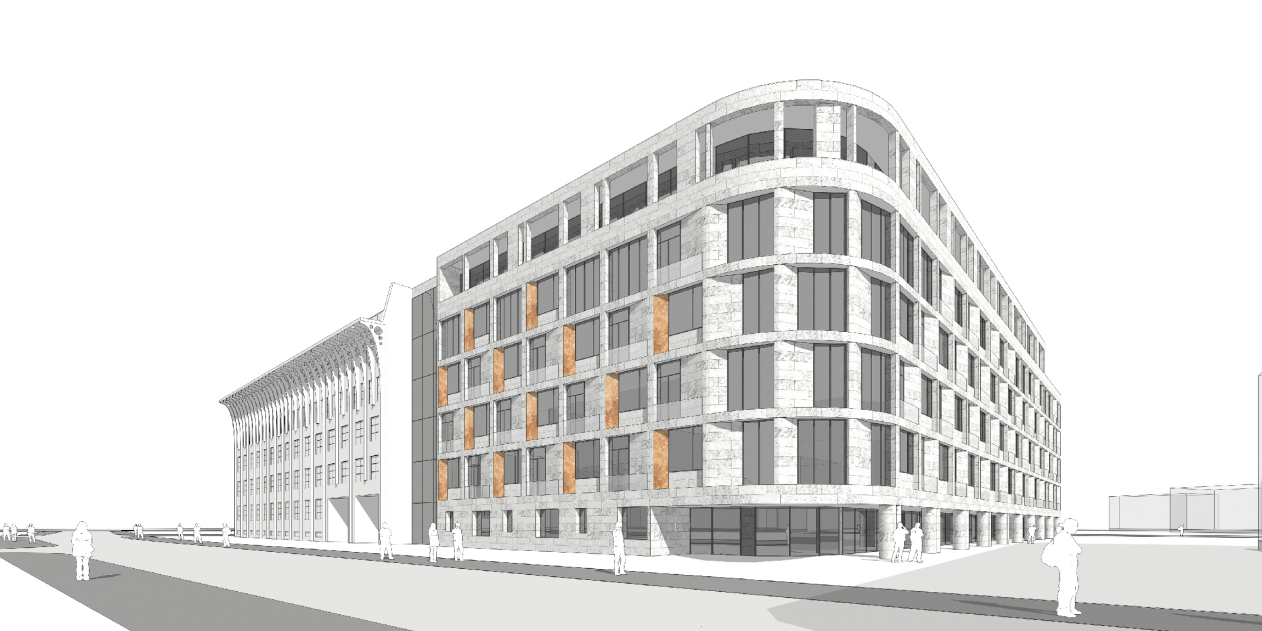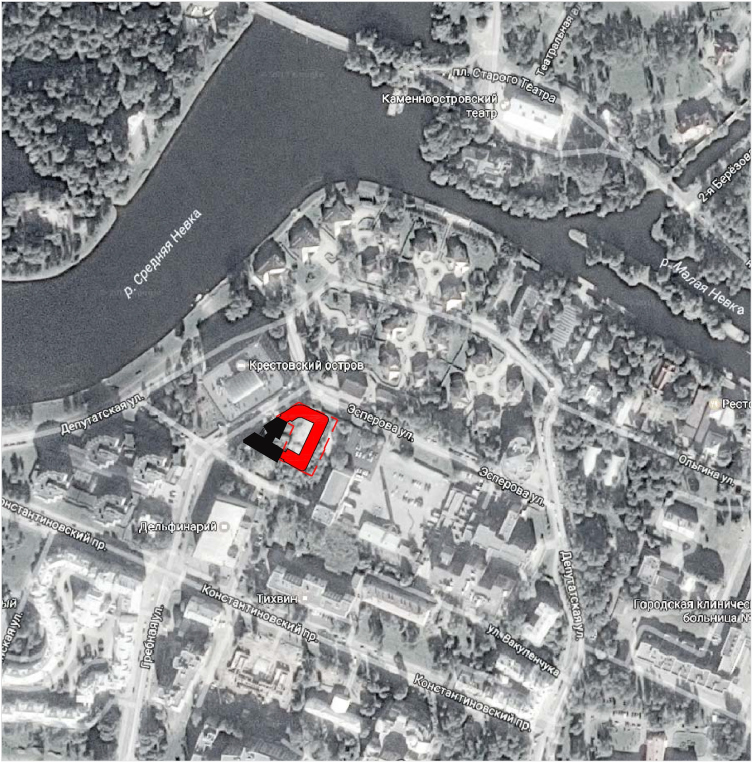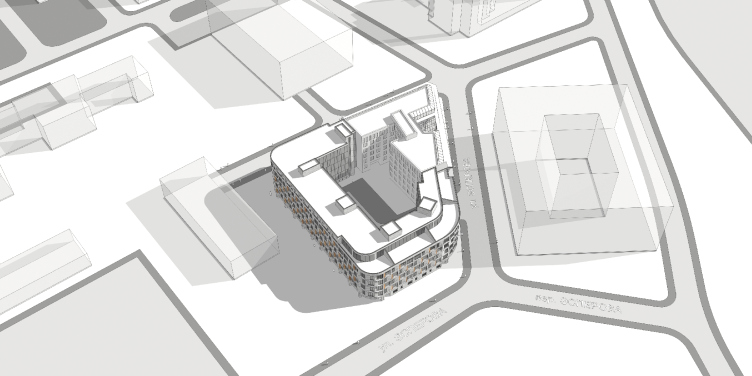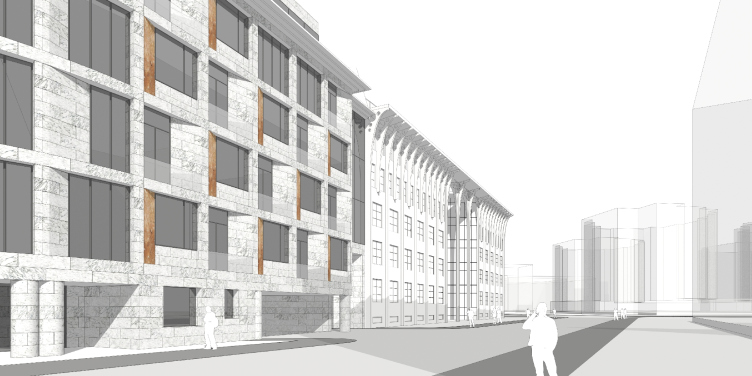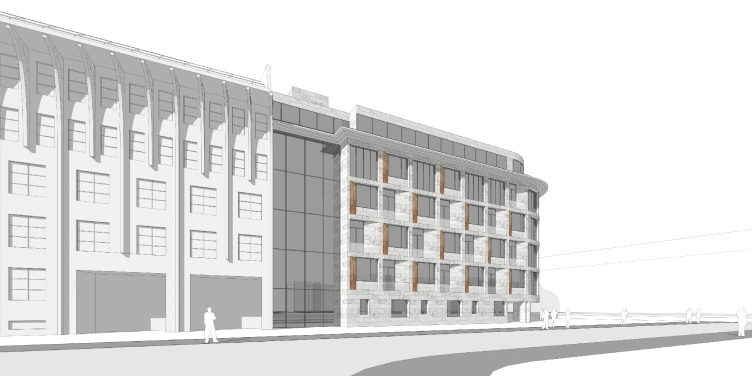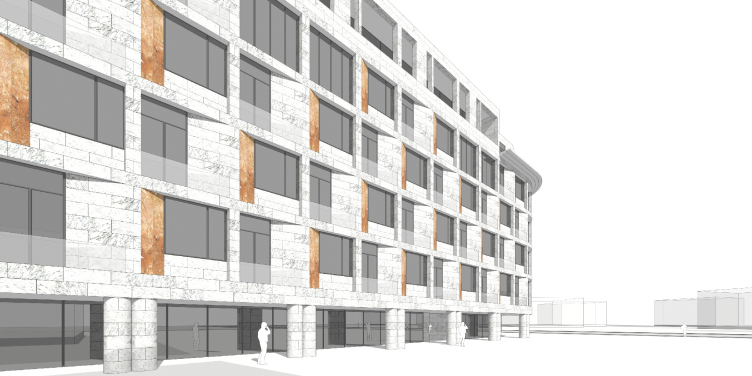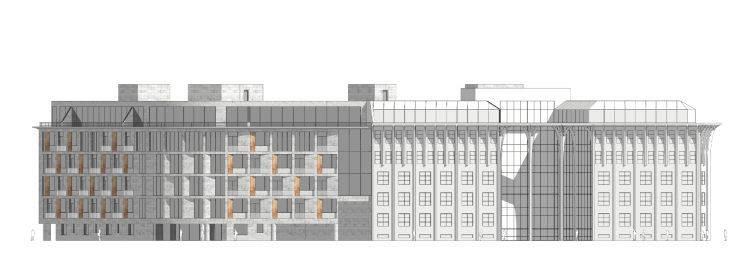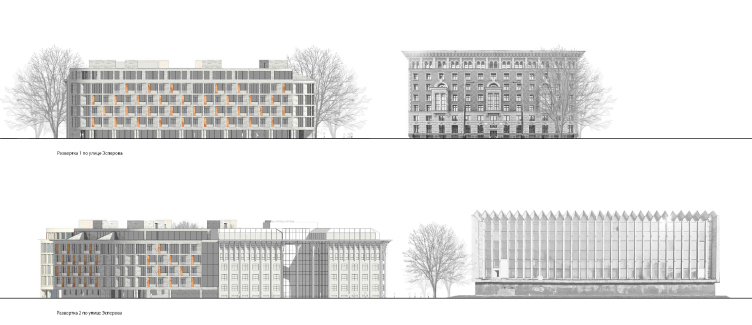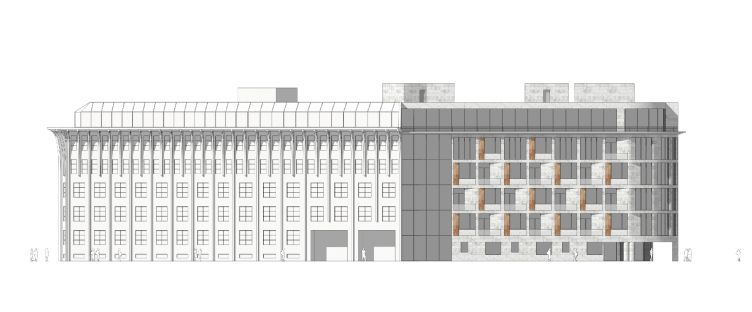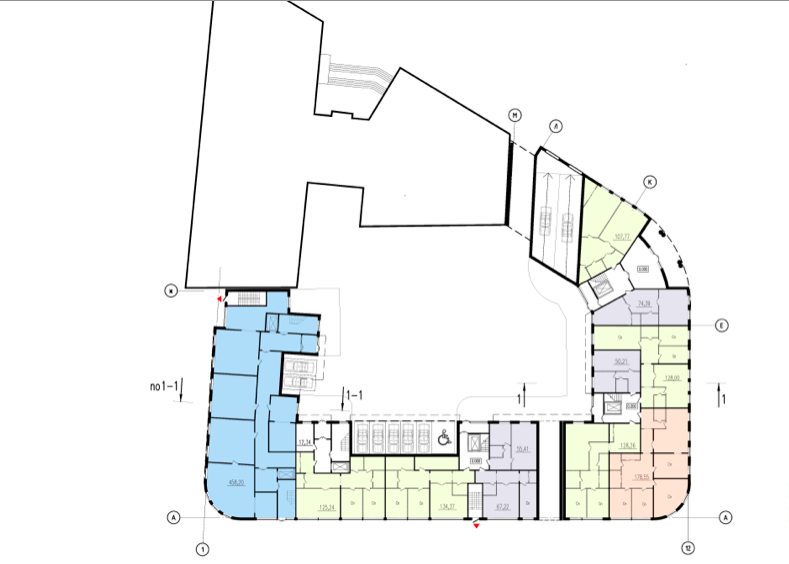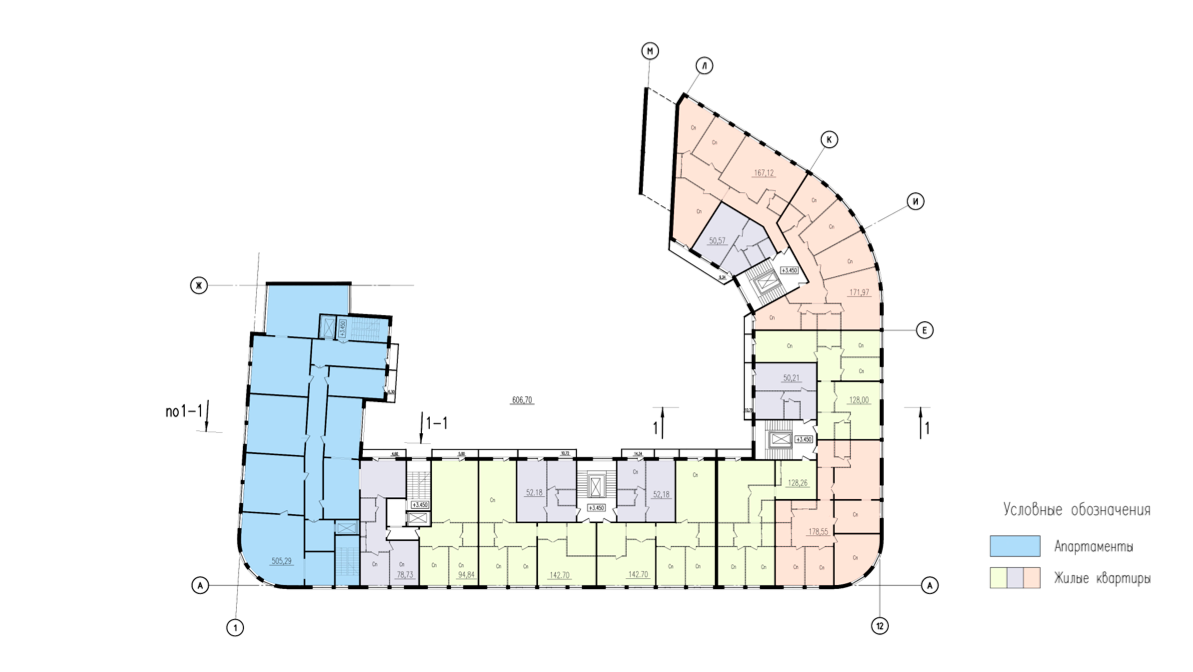The Krestovsky Island is a point of attraction for Saint Petersburg’s developers and architects. Not so long ago it was a “park” island, still a little bit later on – a “stadium” one. Today, this is arguably the island of the city’s most expensive real estate. The west side retained its democratic quality: its amusement parks, greenery, and finally-opened “Zenith-Arena” continue to draw crowds. The east side is strikingly different: uncommonly deserted quiet streets, closed yards, and low-rise houses with dramatic architecture.
Over the last decade, this place has seen works by many popular architectural companies, and one will have a hard time finding a house that did not win an award of some kind at one point in time. If not unlimited, the budget allows for a lot of things: top-quality materials of the gigantic griffins, glass-covered “greenhouse” boulevards, and marinas placed right next to hallways. In addition, the Krestovsky Island is not encumbered by the architectural context – there are few housing projects here, most of the buildings standing independently, surrounded by greenery. So it comes all the more surprising that the new houses that appear here are not at all on the fancy side. At the same time, taking a walk here is quite an interesting thing to do: you will see a living study of contemporary architectural techniques and experiments.
Residential house on the Esperova Street © Anatoly Stolyarchuk architectural bureau
Residential house on the Esperova Street © Anatoly Stolyarchuk architectural bureau
The quiet Esperova Street, upon which the house designed by Anatoly Stolyarchuk is situated, is tucked away into the east side of the island. The trapeze-shaped land side is situated on the “second line’ away from the water, immediately behind the “Venetia” house designed by Eugene Gerasimov, and is shared by the house designed by the architectural bureau of Anatoly Stolyarchuk and the Esper Club residential complex built upon the project of Intercolomnium. Together, they form a closed square that will provide for the perimeter housing of the land site. Other neighbors: the club complex “Diadema Club House” built upon the project of “Zemtsov, Kondiayn & Partners” villas built for the judges of the Constitutional Courst, and the “Spartacus” swimming complex built back in 1972, now turned into a dolphinarium.
Residential house on the Esperova Street © Anatoly Stolyarchuk architectural bureau
Residential house on the Esperova Street © Anatoly Stolyarchuk architectural bureau
Placed in such surroundings, the architects of Anatoly Stolyarchuk bureau set for themselves a task of building a house looking different from its neighbors. “Trying to imitate any architectural styles or the architectural language of the surrounding houses would get us nowhere – says Anatoly Stolyarchuk – the end result of taking this path in most cases will look rather pathetic”. The client did not try to force any stylistic solutions upon the architects either, which ultimately allowed them to create this simple yet graceful house.
According to the architect, its façade is “a totally monochromatic wall, very much like a backdrop devoid of any accents, perforated with windows”. Nevertheless, the wall looks anything but monotonous: the wide backfalls of the French balconies, alternating in a staggered order with regular windows in the frames of the large squares of the façade grid, make the plastique of the building rather active and sophisticated. It even seems at first that the rhythm of the wall is somewhat chaotic, and only later it curiously dawns on you that this is not the case. The predominant material of the façade is light-colored stone but the inserts of terra-cotta panels form an elaborate response to the brick surface of the neighboring “Venice”, while the thin ribs of the façade grid echo the vertical thrusts and neo-gothic cantilevered structures of the Evgeny Podgornov house.
Residential house on the Esperova Street © Anatoly Stolyarchuk architectural bureau
Residential house on the Esperova Street © Anatoly Stolyarchuk architectural bureau
The two right angles of the house are rounded with wide arcs: here the balconies disappear, and the tall floor-to-ceiling windows get backfalls, their rhythm becoming denser. Set in one direction, the откосы accentuate the turnaround very much like the teeth of a giant gear - and the house looks as if it was made of plasticine. The third broad angle of about 120 degrees is set by the turn of the Esperova Street. Here the street meets the alley of the same name, leading towards the river; at the junction of the three streets, a mini-square appears. It is here that the building’s main entrance situated, commanding a view of the Neva; the entrance provides access to the inner yard, and is marked on the level of the first floor by a recessed balcony resting on two pillars. Higher up, the windows are designed in the same way as on the other two turns, only here, instead of uniting them into groups of three, the architects united five vertical rows - the wall is ostentatiously “stretched out” at the bend.
Residential house on the Esperova Street. Development drawing along the Esperova Street, view from the northwest side © Anatoly Stolyarchuk architectural bureau
Residential house on the Esperova Street. Top: Development drawing along the Esperova Street, view from the northeast Bottom: Development drawing along the Esperova and Solnechnaya streets, view from the northwest side © Anatoly Stolyarchuk architectural
The house is of a totally residential kind; it consists of four six-floor sections with one tier of an underground parking garage that occupies the whole of the construction blueprint, the inside yard being its roof. Stretching along the Vakulenchuk Street, the western section of the building is occupied by apartments, and the rest of it is occupied by smaller flats, with 2 to 4 of them on each floor, from 50 to 220 square meters.
On the Esperova Street, the first floor is on the brink of the building red line; it is slit with comparatively small windows, and can be perceived as a basement floor. The grand entrance, as we remember, is designed as a large cantilevered cutaway resting on two pillars. On the northeast side, the only one where the house doesn't have either building front or a red line, adjoining a natural green zone, the architects turned the first floor into a gallery: broad stained window glasses hide here behind an array of coupled round-section supports, which immediately puts one in the mind of “red dorika” by Ivan Fomin.
Residential house on the Esperova Street © Anatoly Stolyarchuk architectural bureau
The top sixth floor recedes from the red line but from the rear side this recession is smaller, and is covered by a thin array of pylons supporting the rhythm of the façade, while from the river side, upon the demand by the Committee on State Control, Use and Protection of Historical and Cultural Landmarks, the stained glass band recedes deep inside, about five meters, and forms a wide terrace commanding fine river views for three penthouses on the north part of the building. On this side, the house got a moderately profiled cornice protruding outwards – what it does is it simultaneously “stops” the height of the building, concealing the sixth floor, and continues, though not literally, the cornice line of the Evgeny Podgornov house. The height of the Anatoly Stolyarchuk house up to the cornice is 18 meters; the total height (including the utility floors) is 23 meters.
Residential house on the Esperova Street. Development drawing along the Vakulenchuka Street, view from the southwest side © Anatoly Stolyarchuk architectural bureau
The side walls of the two houses are joined together – which is a rare construction practice in general but a typical type of Saint Petersburg. In its adjacent or “bridging” places, the house, designed by Anatoly Stolyarchuk, gives up its agility, opting for marking the transition in a more laconic way: namely, with a stained glass window that articulates and at the same time softens the joints between the houses of fundamentally different architecture. On the Esperova Street, the stained glass overhangs above the drive-through arch; on the side of the dead-end Vakenchuk Street, the end-to-end glass surface is only slit by a cornice that makes one recall textbook examples of postmodernism. The laconism of the “bridging” fragments spills over into the yard: the giant surfaces of the stained glasses are framed with flat frames and separated by towers of the stairway and elevator units, and are only livened up by a row of vertical “portholes” – the windows of the first floor and a gallery, now resting on single round supports that mirror on the inside the outside gallery of the northeast façade.
Residential house on the Esperova Street © Anatoly Stolyarchuk architectural bureau
“The architectural solution that we found will only be effective on one condition – high-quality expensive materials and flawless execution” – Anatoly Stolyarchuk stresses. Indeed, this house seems like a result of a combination of conditions that are relatively rare by today’s standards: the comparatively favorable realtor situation of the Krestovsky Island, a low-rise height, the existing restrictions, and the over-saturated surroundings – all this is conducive to working with details. This house is of the “ambient” type, yet its details have been carefully worked out. It is the instant of contextual modernism that requires too-quality execution and expensive details –the French windows or the natural stone. This genre was highly developed in the 2000’s, and then it died away together with the market demand; indeed, from the social standpoint, it cannot draw much sympathy, but from the aesthetic standpoint it can – one can watch such houses on and on looking for new combinations of well-known techniques. So, one way or another, one would like to see this genre develop and grow.
Residential house on the Esperova Street. Plan of the 1st floor © Anatoly Stolyarchuk architectural bureau
Residential house on the Esperova Street. Plan of the 2nd floor © Anatoly Stolyarchuk architectural bureau
Residential house on the Esperova Street. Section view 1-1 © Anatoly Stolyarchuk architectural bureau

